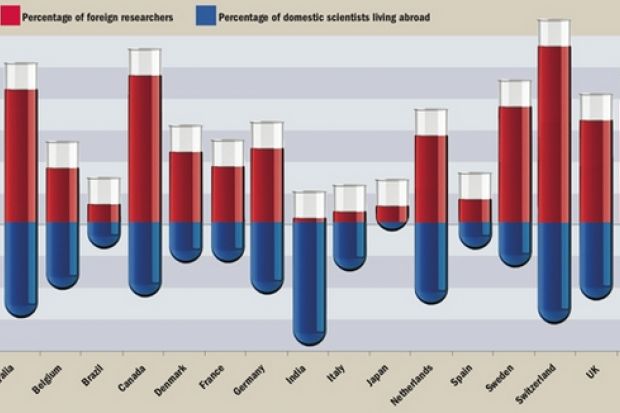The bureau's paper, Foreign Born Scientists: Mobility Patterns for Sixteen Countries, found that at 57 per cent, Switzerland has the largest proportion of immigrant scientists - defined as those in the study who lived elsewhere aged 18 - followed by Canada (47 per cent) and Australia (45 per cent). India has the lowest share, followed by Italy and Japan.
India is also the top exporter: almost 40 per cent of its scientists in the study work abroad, compared with just 5 per cent of Americans.
The data come from a survey of 17,182 scientists in 16 countries who published in biology, chemistry, earth sciences and environmental sciences in 2011.
Each was asked about their current location, the country where they lived at 18, whether they had previously worked abroad and their reasons for moving.
The survey shows that in general, countries recruit from neighbouring nations, although cultural ties are also important: for example, UK scientists are the largest national group among immigrant scientists in Australia.
It also says that 56 per cent of UK scientists have international experience, compared with 78 per cent of Germans and just 19 per cent of Americans.
The report states that Spanish emigrants are most likely to return home and Indian scientists are the most likely to stay abroad permanently.
